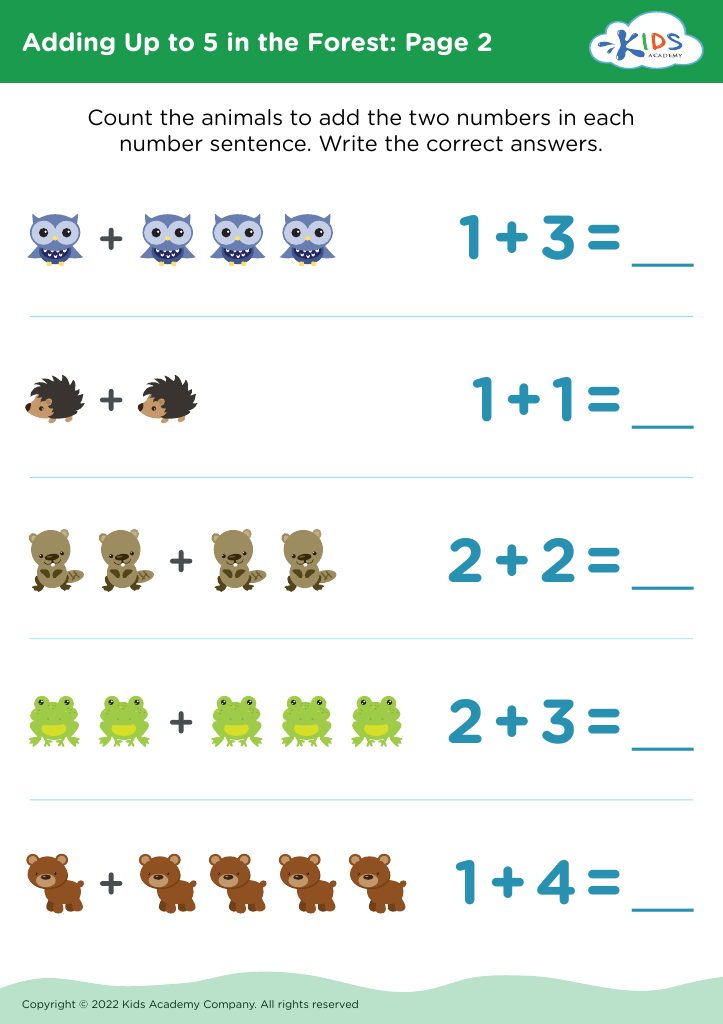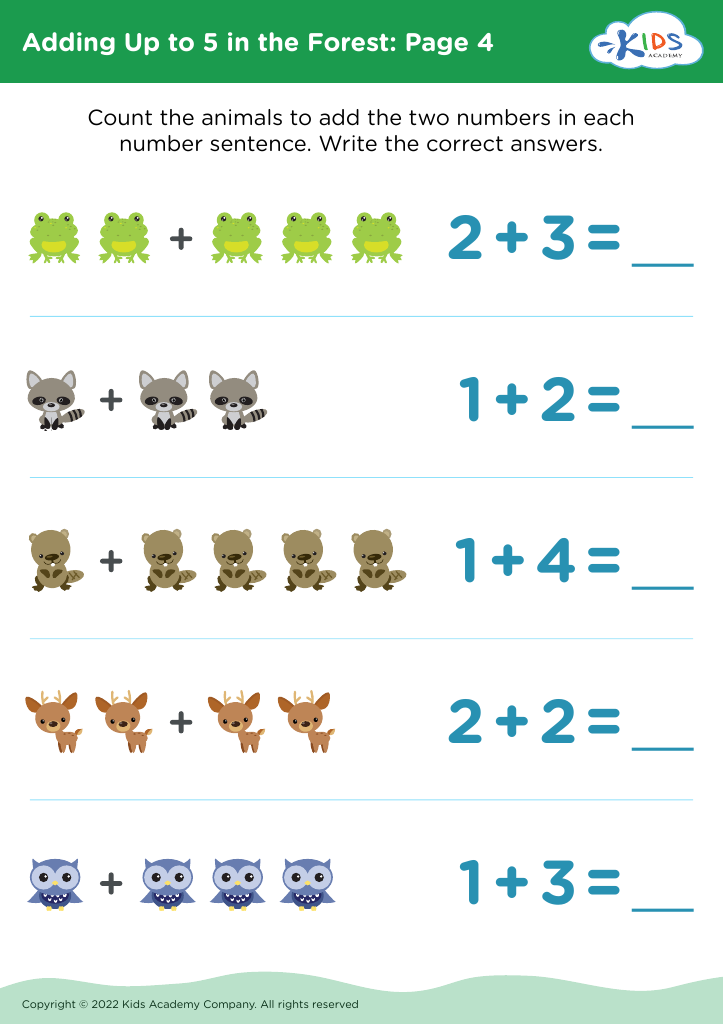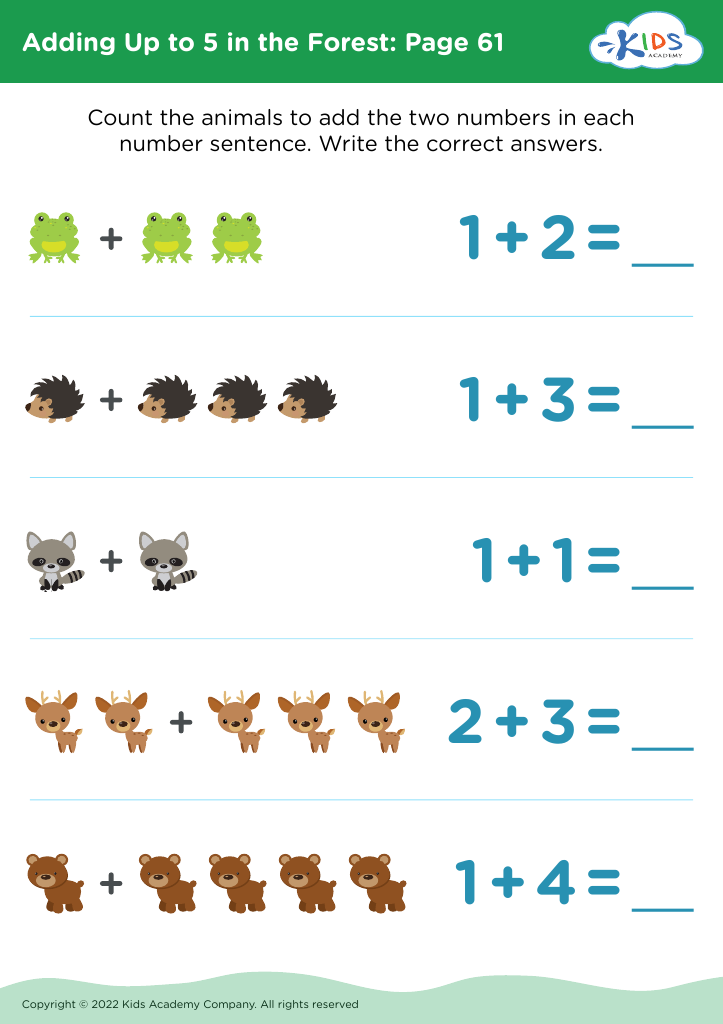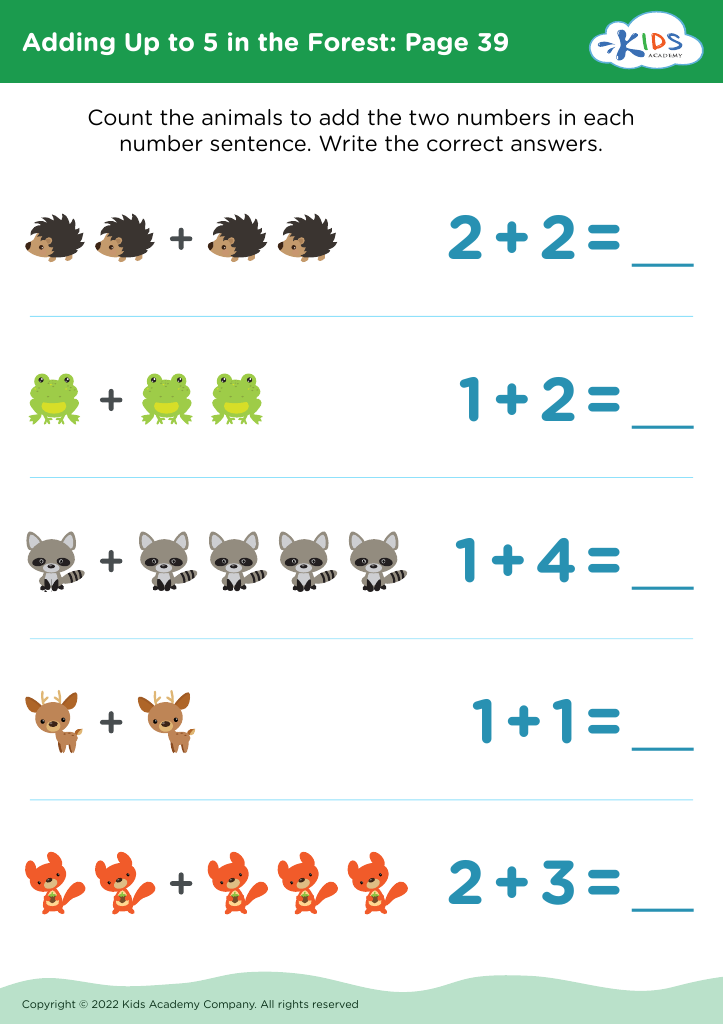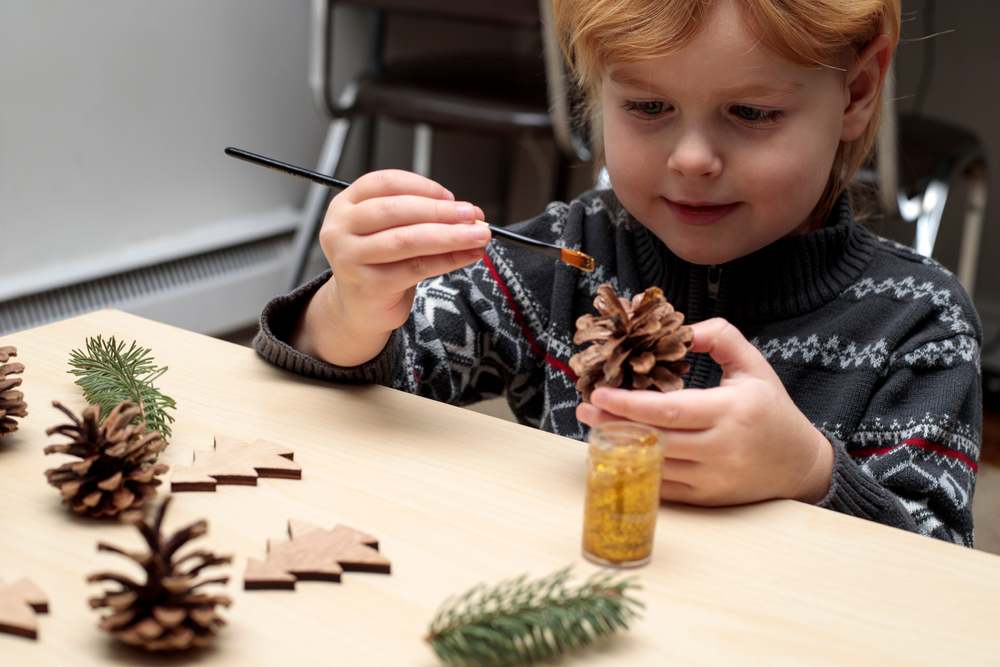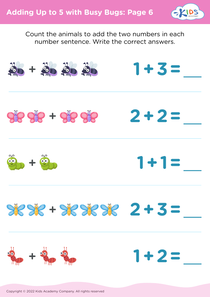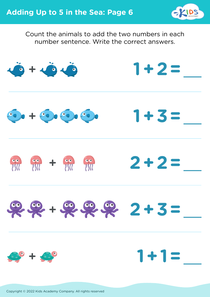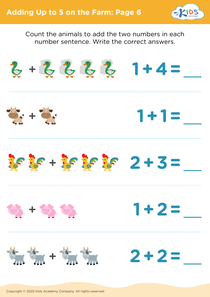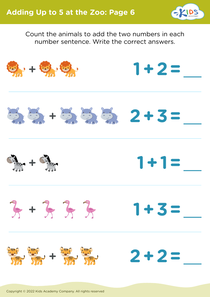Visual perception Adding in the Forest Worksheets for Ages 3-4
4 filtered results
-
From - To
Introduce your little ones to the enchanting world of math with our "Visual Perception Adding in the Forest Worksheets for Ages 3-4". These fun and engaging worksheets combine the magic of the forest with foundational math skills, making learning both captivating and effective. Designed specifically for preschoolers, each activity develops visual perception and counting abilities, ensuring children grasp early addition concepts through colorful forest-themed illustrations. Perfect for parents and teachers, these resources help kids build a strong numerical foundation while sparking a love for learning in a nurturing, imaginative setting. Give your child a head start with our delightful educational tools!
Visual perception skills are critical for early childhood development, and parents and teachers should recognize their importance, particularly for children ages 3-4. Visual perception is the ability to interpret and make sense of visual information from the environment. These skills are foundational for tasks like reading, writing, and problem-solving, which become integral as children advance in school.
"Adding in the Forest" is an engaging educational activity that involves numbers, nature, and vivid imagery, suitable for young learners. By integrating this game into daily routines, it allows children to develop their visual perception in an enjoyable and meaningful context. Spotting different animals, counting trees, or matching items in the forest setting can enhance their visual discrimination, spatial awareness, and attention to detail.
Moreover, visual learning can reinforce cognitive skills such as memory and concentration. It prepares children not just for academic challenges but also everyday problem-solving scenarios. By fostering these skills through immersive and playful activities, parents and teachers can create a solid foundation for lifelong learning. In essence, "Adding in the Forest" promotes essential visual and cognitive development in a manner that resonates with young minds, making it a valuable tool for early education.

